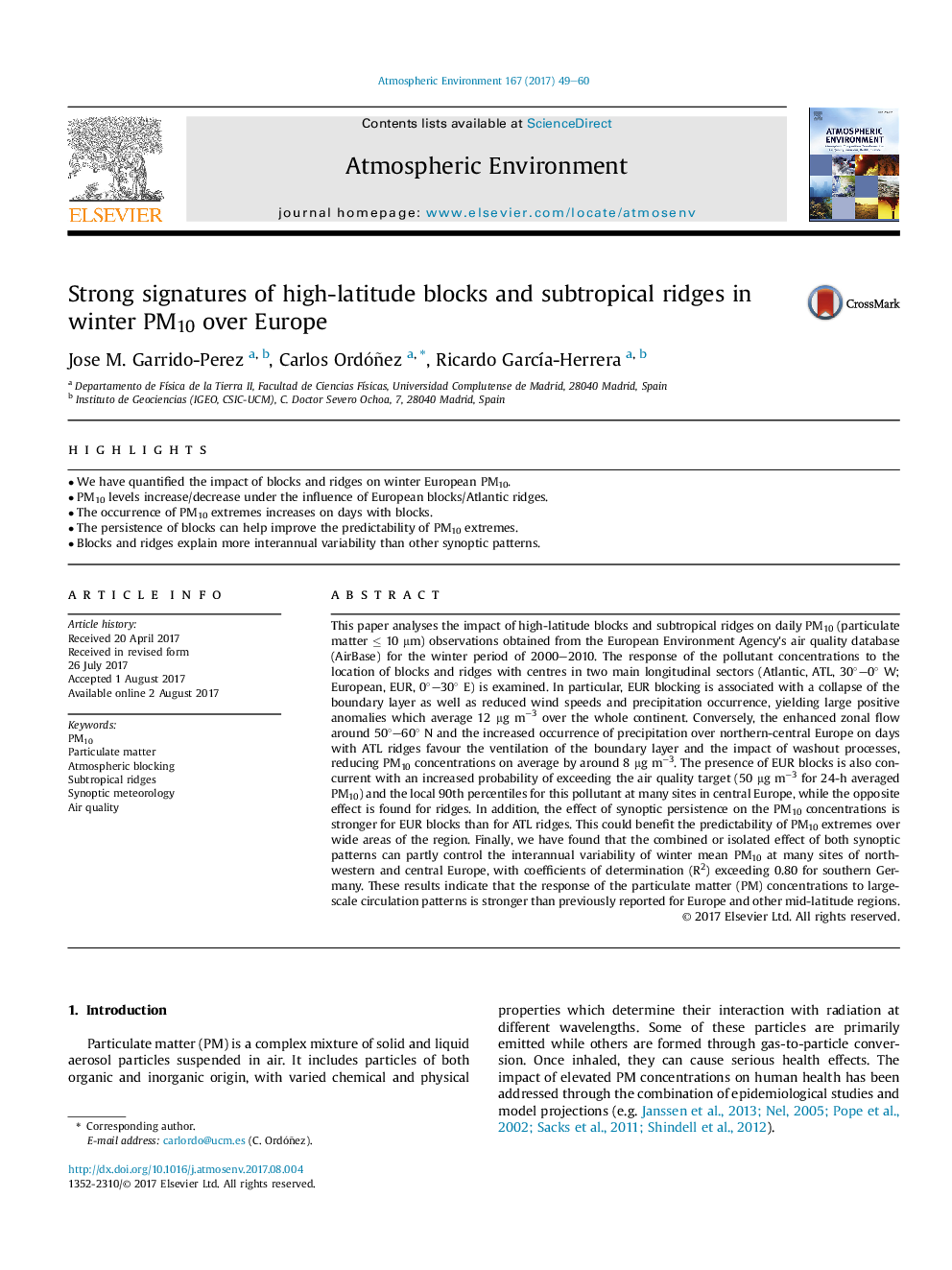| کد مقاله | کد نشریه | سال انتشار | مقاله انگلیسی | نسخه تمام متن |
|---|---|---|---|---|
| 5753051 | 1620307 | 2017 | 12 صفحه PDF | دانلود رایگان |

- We have quantified the impact of blocks and ridges on winter European PM10.
- PM10 levels increase/decrease under the influence of European blocks/Atlantic ridges.
- The occurrence of PM10 extremes increases on days with blocks.
- The persistence of blocks can help improve the predictability of PM10 extremes.
- Blocks and ridges explain more interannual variability than other synoptic patterns.
This paper analyses the impact of high-latitude blocks and subtropical ridges on daily PM10 (particulate matter â¤Â 10 μm) observations obtained from the European Environment Agency's air quality database (AirBase) for the winter period of 2000-2010. The response of the pollutant concentrations to the location of blocks and ridges with centres in two main longitudinal sectors (Atlantic, ATL, 30°-0° W; European, EUR, 0°-30° E) is examined. In particular, EUR blocking is associated with a collapse of the boundary layer as well as reduced wind speeds and precipitation occurrence, yielding large positive anomalies which average 12 μg mâ3 over the whole continent. Conversely, the enhanced zonal flow around 50°-60° N and the increased occurrence of precipitation over northern-central Europe on days with ATL ridges favour the ventilation of the boundary layer and the impact of washout processes, reducing PM10 concentrations on average by around 8 μg mâ3. The presence of EUR blocks is also concurrent with an increased probability of exceeding the air quality target (50 μg mâ3 for 24-h averaged PM10) and the local 90th percentiles for this pollutant at many sites in central Europe, while the opposite effect is found for ridges. In addition, the effect of synoptic persistence on the PM10 concentrations is stronger for EUR blocks than for ATL ridges. This could benefit the predictability of PM10 extremes over wide areas of the region. Finally, we have found that the combined or isolated effect of both synoptic patterns can partly control the interannual variability of winter mean PM10 at many sites of north-western and central Europe, with coefficients of determination (R2) exceeding 0.80 for southern Germany. These results indicate that the response of the particulate matter (PM) concentrations to large-scale circulation patterns is stronger than previously reported for Europe and other mid-latitude regions.
Journal: Atmospheric Environment - Volume 167, October 2017, Pages 49-60